Your quad is a do-anything machine. ATV’s are great for getting things done and for recreation too. But now you’re looking at your tires. Maybe you’ve blown one or they’re getting bald. Or maybe you just want a more aggressive tread pattern and a bigger tire. The problem is you’re a little lost when it comes to your ATV tire size.
How big can you go? Should you go big? How do you even know what all these numbers represent?
Don’t worry, we’ve got you covered. We’ll answer all those answers and more in this comprehensive guide.
How Do You Read ATV Tire Sizes?So, you’re shopping around for tires and you see one listed with a size like 26×10-12. Or, worse yet, you find something listed like 206/80R12.
What the heck does all that mean?
First, you need to figure out if you’re dealing with standard or metric ATV tire sizes.
ATV Tire Sizes: Standard Tire Sizing ChartStandard format is much more common on ATV tires than metric. You might see a tire size written 26×10-12 or, occasionally, 26x10x12. This format is pretty straightforward. It uses three numbers to sum up the size:
If you see a tire size that looks like this: 205/80R12, you know you’re dealing with metric. The metric format is exceedingly rare for ATVs and odds are you’ll never come across it. But if you do, the letter thrown in the middle of those numbers is a dead giveaway. In metric, you always have three numbers and a letter:
There may be other numbers and letters before and after these, but they’re not important for understanding your ATV tire size.
Breaking Down ATV Tire Sizes by the NumbersKnowing how to read those tire sizes is just the first step.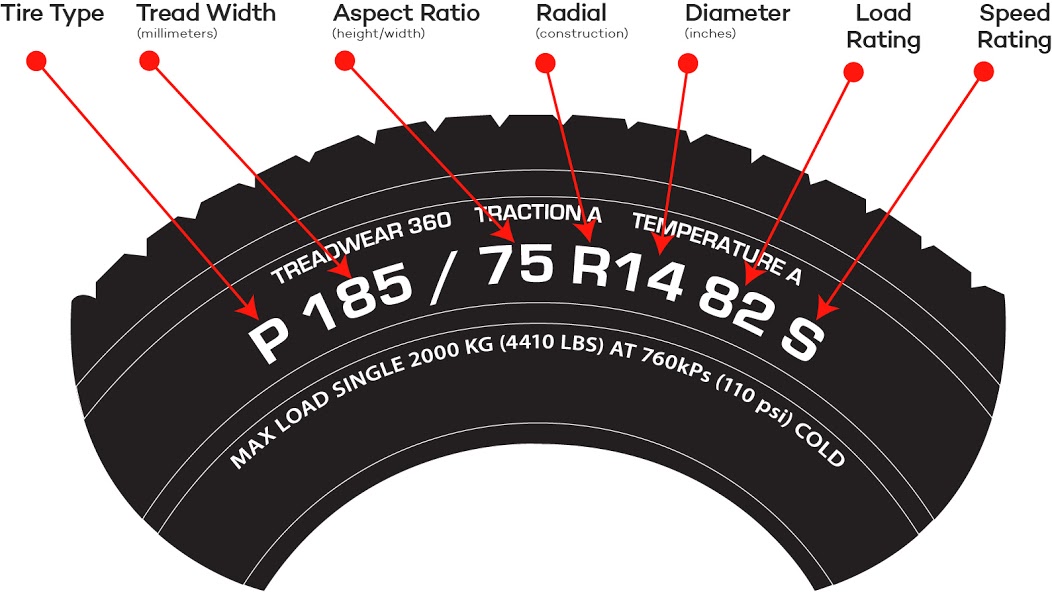 You really need to know how to use them. Is 26 inches a reasonable diameter for your quad? What kind of width do you need?
You really need to know how to use them. Is 26 inches a reasonable diameter for your quad? What kind of width do you need?
When you’re considering replacing all of your tires, you’ll want to make sure you get something that will actually fit on your stock vehicle.
Your typical ATV tire diameter fits within a range of about 20 inches for the smallest machines to about 30 inches for your more factory mud-equipped machines.
Basically, your quad will typically fit into one of few categories:
Keep in mind that you’ll want to keep within a couple inches of your stock tire size. If you go too big, you’ll start to rub on your fenders (among other issues). If you go small—well, that’s just silly.
Tire width is easier to understand. Choosing the right tire width has a lot to do with your own preferences and riding style.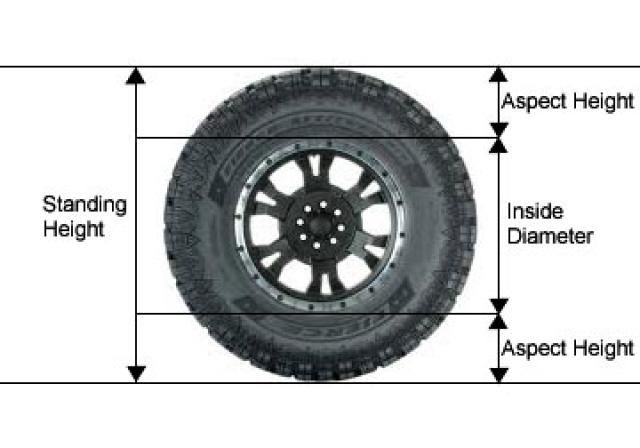
A wider tire tends to give you a flatter tread pattern and more grip. A narrow tire gives you a little more control.
ATV’s usually have a wider tire on the rear than on the front to get the best of both tires. A typical rear tire on a quad will be 10 to 11 inches wide while a front tire will be 7 to 8 inches wide.
But matching your tire width to your riding style isn’t the only thing you need to consider. You also need to make sure it’ll physically fit on your chosen wheel. There are two main ways to make sure it’ll fit.
This one is non-negotiable.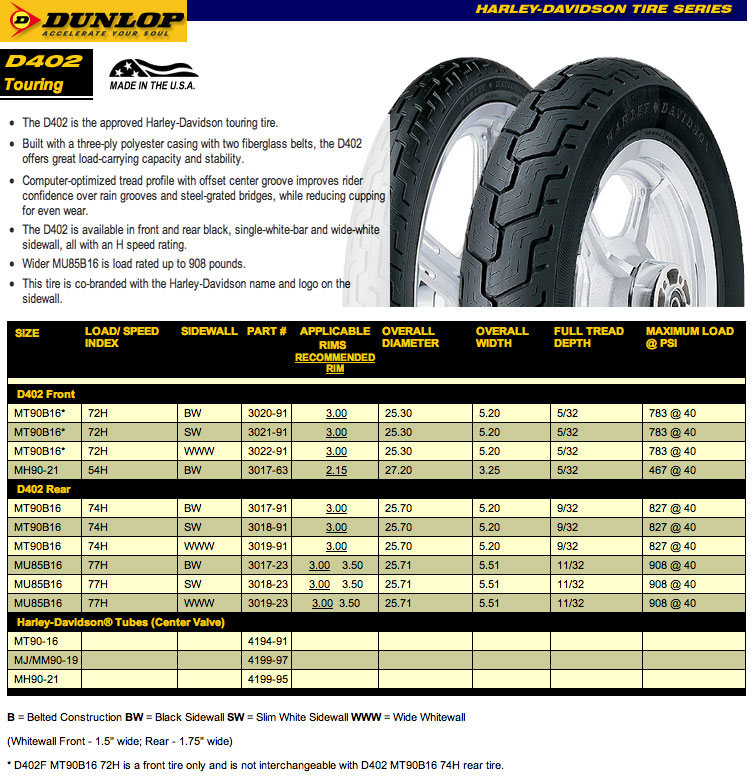 You have to make sure your tire’s wheel diameter matches your actual wheel diameter.
You have to make sure your tire’s wheel diameter matches your actual wheel diameter.
Most off-road wheels tend to be 10 to 12 inches in diameter—which is convenient considering most off-road tires are designed to fit those wheels. That’s a good size as it gives your tire plenty of cushion between the tread and rim, which results in smoother rides and more protection for your rims.
Of course, you can end up with bigger wheels if you have bigger tires, but we’re getting ahead of ourselves.
Choosing the Right Size Tires for Your ATVYou don’t need any old tire. You have to choose the perfect ATV tire size for you. After all, you ride your own way and have your own needs.
We’re going to simplify ride style to three main types:
For a workhorse ATV, it’s not a bad idea to stick with stock. It’ll give you the expected traction and power you need.
Trail riding, like dune riding, means you want to go fast.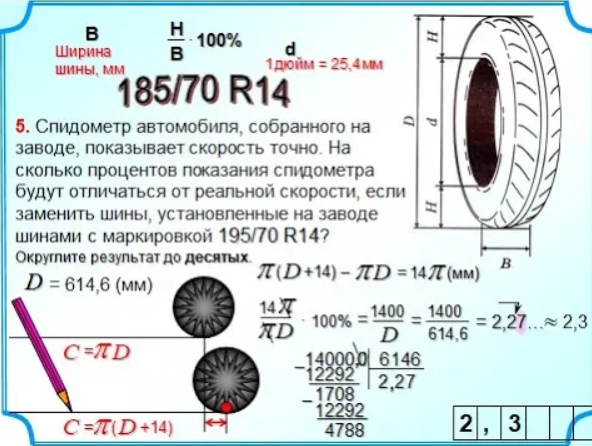 For that, a wider, flatter tire will keep you gripping and in control. If you ride in the mud, you might want to go with something bigger and narrower along with an aggressive tread pattern.
For that, a wider, flatter tire will keep you gripping and in control. If you ride in the mud, you might want to go with something bigger and narrower along with an aggressive tread pattern.Trails and dunes demand high traction, and you get that by going wider. You don’t necessarily need a taller tire, but a wider one will give you the grip you need.
Dominating rock gardens and taking on bounty holes is done best with a big tire. But going big isn’t as simple as just buying the biggest tire you see.
Can I Put Bigger Tires on My ATV?The short answer is yes.
Here comes the long answer.
Every ATV has a theoretical maximum tire size it can fit without modifying the suspension. It’s typically about one to two inches bigger than your stock tires. So if your ATV came with a 27-inch tire, you could probably fit a 29-inch tire without too much trouble.
But what if you want to go bigger?
That takes some work. You’ll either need to invest in a lift kit or some offset A-arms. These types of kits will often tell you what the max tire size is when you have them installed.
These types of kits will often tell you what the max tire size is when you have them installed.
You can’t go big without some consequences though. Namely, you’ll lose torque due to the increased diameter (big tires like a high-gear kit!) and the extra weight. The weight can also put extra strain on your clutch and shorten the life of your clutch belt.
Luckily, you can get your torque back with a transmission gear reduction or GDP Portal Gear Lift (which has a gear reduction built in).
You can also bolster your clutch with heavy-duty drive belts and eek out even more torque with a clutch kit.
So now that you’re equipped with knowledge, go equip yourself with some tires. Get the ATV tire size you want, and ride with confidence.
RELATED CONTENT: ATVs38 tires15
Share
10
Tires hold great importance whenever we talk about ATVs.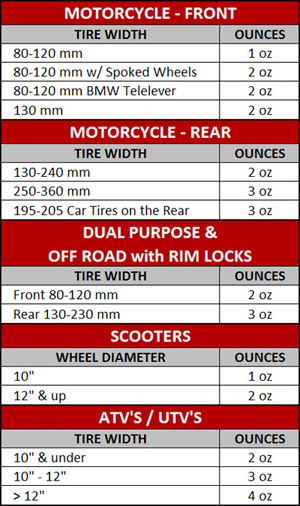 ATV tires are available in various sizes, shapes, treads, and materials. It cannot be easy to go through all the options to find the right tire for your riding style. Choosing the right tire for your environment improves handling, cornering, and braking depending on the riding terrain.
ATV tires are available in various sizes, shapes, treads, and materials. It cannot be easy to go through all the options to find the right tire for your riding style. Choosing the right tire for your environment improves handling, cornering, and braking depending on the riding terrain.
Changing tires when needed also improves performance, and the difference between used and new tires is immediately noticeable. It’s worth the extra money for a high-end set of tires, but you don’t have to spend a lot of money to get a good tire that will last you years of driving. How to read ATV tire size?
Replace Slip Yoke Seal And Change ...
Please enable JavaScript
Replace Slip Yoke Seal And Change Transfer Case Oil || Jeep Mods E44
Reading an ATV tire size is not an arduous task. It requires some specific things which need to be considered. The inch is the most widely used unit of measurement for ATV tires. In the format 25 × 8.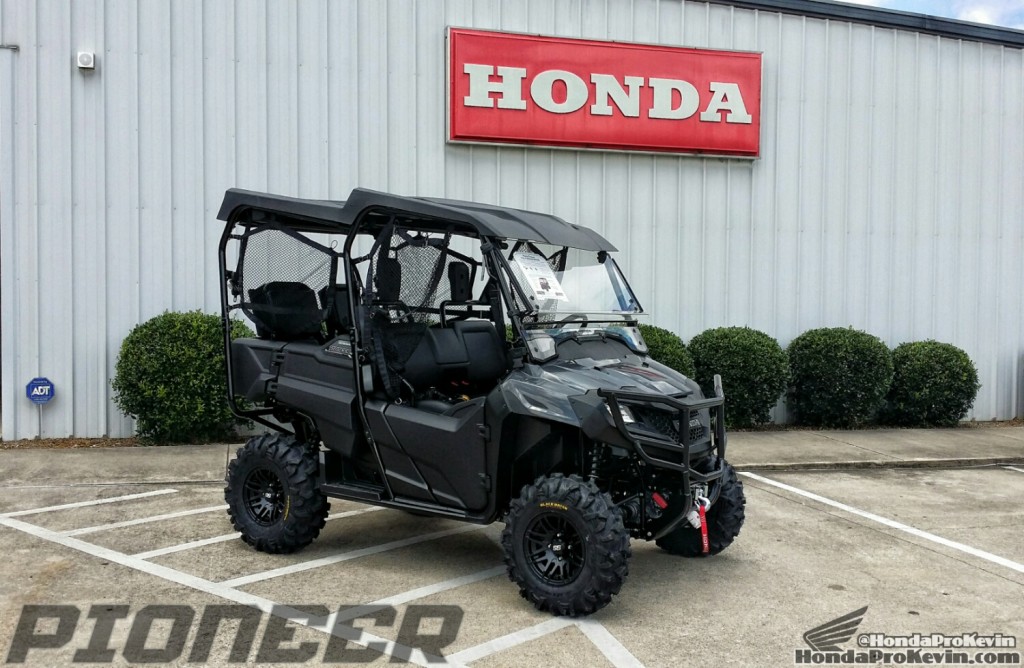 0012, the meaning of the number is:
0012, the meaning of the number is:
For Example, AT25 × 812
So, in this example, the tire will be mounted on a 12″ wheel/rim, and its shape or shape cannot fit any other wheel size
Reading an ATV Tire Size:Firstly, make sure that you deal with standard or metric ATV tire sizes.
The standard format is much more common on ATV tires than metric. You can see the tire size is 26×1012 or 26x10x12. This format is very simple. Three numbers are used to sum the sizes.
| Height | The overall height of the tire when mounted and inflated to recommended air pressure. |
| Width | The overall width of the tire when mounted and inflated to recommended air pressure. |
| Diameter of the wheel | The diameter of the wheel that this tire will mount to. |
The metric format is extremely rare for ATVs, and you will rarely encounter it. But if you do, any letter thrown between those numbers will be a worthless sale. Metric always has three numbers and a letter.
But if you do, any letter thrown between those numbers will be a worthless sale. Metric always has three numbers and a letter.
There may be different numbers and letters on the front and back, but that’s not important to understanding the tire size of your ATV.
| Width | The width of the tire is in millimetres. |
| Sidewall height | The sidewall height is represented as a percentage of the tire width. |
| Radial | This indicates the construction of the tire. |
| Diameter of the wheel | The diameter of the wheel that this tire will mount to, is 12 inches. |
Understanding how to read this tire size is just an initial phase. You also need to understand how to use them. Are 24 inches being suitable diameter for your quad? What type of length and width do you need for your quad?
You also need to understand how to use them. Are 24 inches being suitable diameter for your quad? What type of length and width do you need for your quad?
If you’re thinking of replacing all your tires, you’ll need to buy tires that fit your standard vehicle. Typical ATV tire diameters range from about 20″ for the smallest machines to about 30″ for more factory equipment.
Typically, ATVs fall into one of several categories.
What is The Best Rim Size for Off-Roading?
Tire Width Breakdown:The width of the tire is easy to understand. Choosing the right tire width largely depends on your preferences and riding style. Wide tires provide a flatter tread pattern and better grip. Narrow tires give you more control. ATVs tend to have a wider rear tire than the front to get the most out of both tires.
ATVs tend to have a wider rear tire than the front to get the most out of both tires.
Typical ATV rear tires are 10" to 11" wide and front tires 7" to 8" wide. However, fitting the tire width to your riding style isn't the only thing to consider. You also need to make sure that it physically fits your chosen wheel.
There are two main ways to make sure it works:
You need to make sure that the wheel diameter of the tire matches the actual wheel diameter. Most off-road wheels are typically 10 to 12 inches in diameter, which is convenient considering that most off-road tires are designed for these wheels.
Most off-road wheels are typically 10 to 12 inches in diameter, which is convenient considering that most off-road tires are designed for these wheels.
This is a good size as it provides ample cushioning between the tread and rim of the tire for a smoother ride and better rim protection. Of course, we can get bigger wheels with bigger tires, but we’re getting ahead of ourselves.
What Tire Pressure for Off-Roading Is Suitable
Choose the Right Tires for ATV:Old tires are not needed. You should choose the tire size that is best for your ATV. After all, you go your own way and have your needs. We’re going to simplify our riding style into three main types.
Who Makes Tracker ATV?
All-Purpose ATV Tires:If I can keep things simple and drive all these terrains without changing tires, I’d go with All-purpose tires.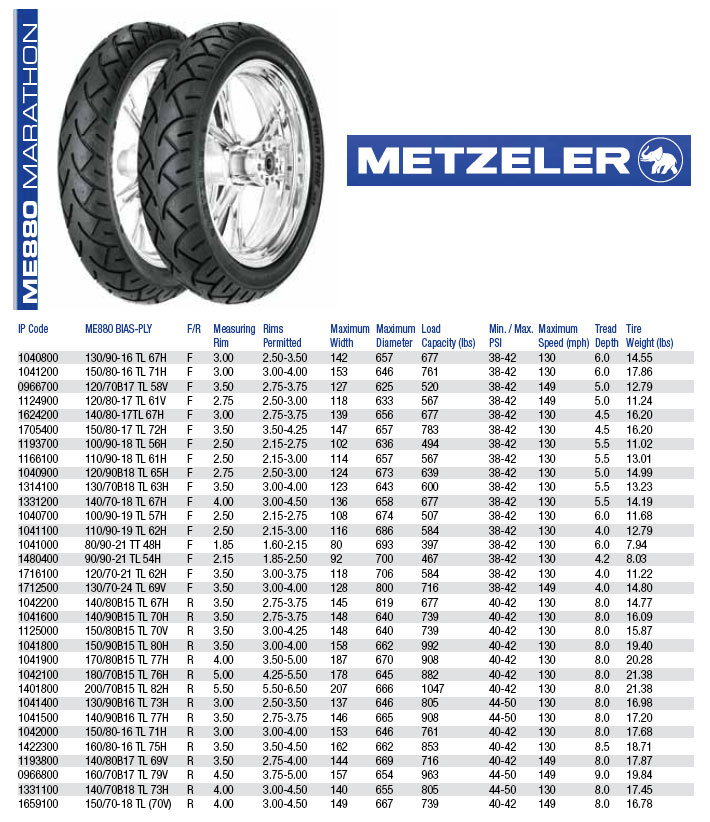 Anyway, this usually comes with a new ATV. If you choose to use these tires, keep the tread depth at least 0.5 inches. So, the tire will last for a while.
Anyway, this usually comes with a new ATV. If you choose to use these tires, keep the tread depth at least 0.5 inches. So, the tire will last for a while.
All-purpose tires are the most popular and most purchased 4-wheel vehicle tires. From muddy riverbeds to paved trails, you can experience the same performance on your rig. Surely the mud tires will beat them in the mud. But for casual riders, All-purpose tires are the best choice.
Off-Road ATV Tires:Off-road tires are very similar to All-purpose tires. The only real difference is that Off-road tires are made with a harder tread and are generally more durable. You must be able to handle off-road situations. Off-road tires are generally the more durable all-terrain tires because you can touch everything from snowy mountain roads to sandy forest trails.
Motocross ATV Tires:Human hands usually make ATV moto crosses. The soil is loose, so you’ll need tires with solid lugs to help you around corners. However, an increased tread pattern is also required to improve traction when accelerating. The grip is very important when jumps and other obstacles can lead to injury.
However, an increased tread pattern is also required to improve traction when accelerating. The grip is very important when jumps and other obstacles can lead to injury.
These types of tires usually have a deeper hole than most other tires. Mud tires should provide traction in a worst-case scenario. Tires have large bumps to help them get out of mud or snow. They will guide you on dirtier terrain than off-road tires. Make sure you choose the right size for your wheel.
Sand ATV Tires:Sand tires are only needed if you plan to roll the dunes. By the way, great and worth a try. In general, the rear wheel is like an oar through the sand, and the front wheel is smooth except for a centre rib for steering.
Sand tires can be expensive and hard to justify as they are only really useful for dune bikes. You might be fine with your general-purpose tires, but you’ll get stuck and tired of crawling.
Street Tires:If you want UTV/ATV legalized, you need to install road tires.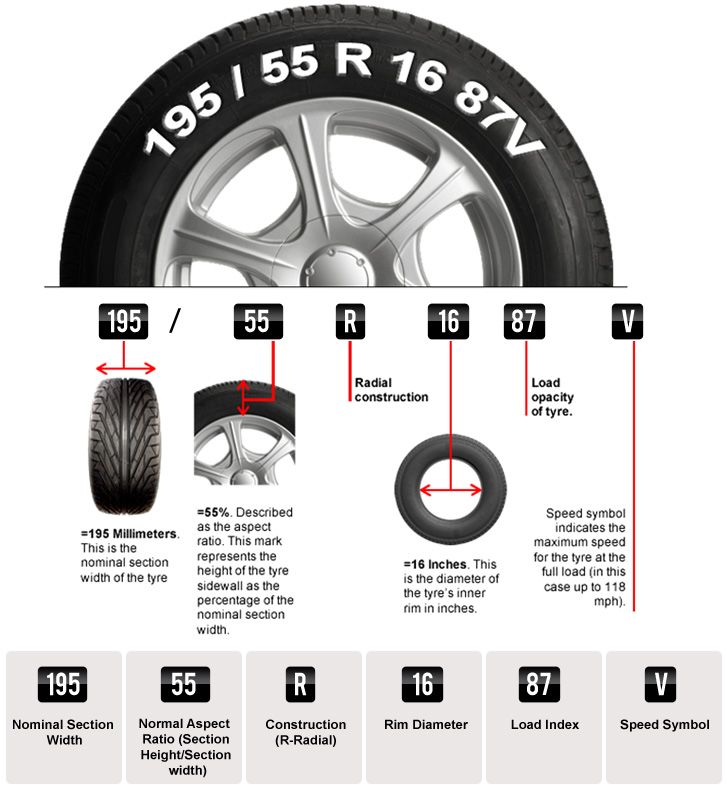 In most states, these DOT-approved tires are required before the ATV can be taken out on the road. Like regular car tires, they need periodic replacement to prevent excessive wear and tear. Asphalt is always rough on the tire tread, regardless of the vehicle, so it usually wears out the fastest.
In most states, these DOT-approved tires are required before the ATV can be taken out on the road. Like regular car tires, they need periodic replacement to prevent excessive wear and tear. Asphalt is always rough on the tire tread, regardless of the vehicle, so it usually wears out the fastest.
Snow removal with blades mounted on the rear of the ATV. Enlargement. Most mud and trail tires work better in snow. However, true ATV winter tires are specifically designed to improve traction in snow. There are two main designs for winter tires, both of which resemble a combination of other styles.
The first design is similar to a trail tire but with shorter lugs with a mud pitch. The second design sports a muddy or trail tire pattern with very thin lugs. Both styles have distinct advantages. The first design allows you to add more studs, especially if you need more traction on icy roads.
The second style works wonderfully on loose snow and is great for sports ATVs. Both designs have large tread gaps, allowing tire build-up to be easily removed.
Both designs have large tread gaps, allowing tire build-up to be easily removed.
How Much Do Off-Road Tires Cost? Regressive Analysis
Trail:This is arguably the most common tire, in part because it is very versatile and can handle most terrains and situations quite well. Besides, they tend to last quite a long time. Trail tires are also available in a variety of tread patterns. Some come with long side lugs, others with square lugs.
Trail tires have in common that the bumps are very close together, which creates a slightly larger contact patch. The tread depth of these tires is typically 1 inch to 1 inch. This tread depth, combined with a large contact patch, provides excellent grip to the trail tires for a smooth ride.
Facts related to ATV tires and tire size
Racing | All-Terrain | ||
Riding in mud holds no substitute and this is the basic tread pattern. | They are also called paddle tires as they look like paddles. | Racing tires hold specialty and are considered as best ones to work on sport ATV. | This is a weapon of choice in the world of ATV and side-by-side. |
ATV mud tires are all about to go forward in sloppy surfaces. | Fronts are normally smooth and have a couple of simple ribs. They are not good for anything except sand. | They hold special tread designs and compounds and have a flat profile. This thing intends them to run on medium to hard-packed terrain. | This category holds the designs which are favorable to one kind of terrain more than another. |
If you ride these mud tires in rocks or on hardpack terrain, then you will definitely pay the price for it. | You can keep a pair of rear paddles mounted whenever you get the urge to ride the dunes. | These tires are probably the better choice in all-terrain type tires. | They have a little more tread depth with a bit more space between lugs. This thing is considered better for self-cleaning and gives better traction. |
| Pros (Wider than stock) | Cons (Wider than stock) |
| Increased concerning traction | More steering efforts |
| Better Acceleration | Increased stress on suspension components |
| Braking on some surfaces | Tire rub on some ATVs |
| (Narrower than stock) | (Narrower than stock) |
| Improved grip in soft terrains like mud and snow | Less grip on most hard surfaces and more tendency to follow ruts |
| Small Diameter | Large Diameter |
|---|---|
They reduce the center of gravity and ground clearance. | They increase the center of gravity and ground clearance. |
| They reduce tip fins and provide a higher center of gravity on rough terrain. | Load on the transmission and brakes increases. |
| Acceleration is faster in this case and top speed is lower. | Acceleration is slower in this case and top speed is higher. |
If you don’t know yet, you might be shocked by the price of OHV tires. There are so many brands and types of tires to choose from; you can choose a price point before buying a tire.
Then limit yourself to considering tires in this price range. Choose the tire that best fits your ATV and riding style. If money isn’t really important to you, buy a few sets of special tires, and you’ll be ready for any terrain.
How to Read Standard Tire Size?Example: 26×8×12
Height | Diameter | |
In the above example, 26 is the overall height of the tire. | In the above example, 8 is the overall width of the tire. | In the above example, 12 is the overall diameter of the tire. |
It is related to height when the tire is mounted and inflated to recommended air pressure. | It is related to width when the tire is mounted and inflated to recommended air pressure. | It is related to the diameter when the tire will mount to. |
This means that from the above example, the tire must be 26 inches tall. | This means that from the above example, the tire must be 8 inches wide. | This means the form above example, the tire must be 12-inch in diameter. |
Example: 207/60R13
Aspect Ratio | Radial Construction | Diameter | |
From the above example, 207 is considered as the width of the tire in millimeters. | From the above example, 60 is the aspect ratio. | From the above example, R is the radial construction. | From the above example, 13 is the diameter of the wheel. |
It is related to the width when the tire is inflated and mounted to recommended air pressure. | Aspect ratio to the width of the tire is when it is inflated and mounted to recommended air pressure. This specifies the sidewall height. | R which is the radial construction indicates that the tire uses radial construction. | The diameter of the wheel indicates that the tire will mount to and from the above example, the wheel holds a 13-inch diameter. |
Also Read:
What to Wear During ATV Riding?
What is a UTV vs ATV?
How Much Does An ATV Cost? Complete Guide
ATV tires are listed in a set of three numbers which are separated by dashes. For example, we can consider 25 ×10-12 as tire size in which 25 is considered the tire’s height, 10 is the tire width, and the 3rd number, which is 12, is considered as wheel diameter.
If you want to determine the diameter of the wheel, measure the width of the bead area of the wheel, excluding the outer rim. Measure the center weld to the center of the tire bead area on both sides of the wheel if you want to determine the offset and width of the wheel.
It is a general rule that most vehicles tend to easily handle an increase in tire size one or two sizes larger than the stock.
It will become noticeably harder to steer, but still, you can install the same width tires. If you don’t have a power steering, it is advisable not to attempt this.
Every ATM rim has an offset that consists of two numbers. The first number is the measurement from inside lip to rim to the center of rim where hub and rim meet. The second number is the measurement from the hub to the outside lip of the rim.
Smaller-width tires are adjusted on the front side of the ATV as they have less surface contact due to their smaller size. There is less tire touching the ground at any given time. The steering effort is reduced so side-by-side becomes easier to maneuver.
ATV tires are wider in the rear as they increase traction and stability. It enhances the safety and overall performance of the vehicle.
05/17/2018
The numbers written on the side of the rubber tire can tell the owner of the ATV everything that interests him. And if you are for some If you don't know what these mysterious numbers mean, then you can be mistaken when choosing the next set of tires. But tires directly determine whether it will go technique further or not. So, in this article you will close all the questions on about the decoding of size ATV tire .
All tires have their own basic parameters - this is the width, height and diameter. The value of these parameters is mainly measured in inches. Exist two units:
1) If you have ATV, then this is for you. English version is the most common number system that is used when determination of tire dimensions on ATVs. All measurements here are in inches. (1 inch equals 2.54 cm). For example, the size indicated in English classification looks like this - 25x8x12 . Let's take a closer look at the meaning of each digit:
Let's take a closer look at the meaning of each digit:
- The first digit 25 shows the height of the tire in inches;
- The second digit 8 indicates the width of the tire in inches;
- The last, third digit 12 indicates the diameter of the wheel disk, it is also measured in inches. Disc diameter on each ATV can be different. Therefore, be careful before you buy tires for ATV, see what regular disks are installed on your vehicle. nine0004
And a very important point worth noting. Often our customers ask themselves: “If I have a tire size of 20x10x10, can I put instead of them 20x11x10? The answer is yes. First, you can put rubber on regular wheels with a size exceeding 1 inch in height and width. Secondly, if you want tires even wider, then for this you will need to buy other disks. But again, there are limitations. On discs of other diameters, you can install rubber, the largest is only 2 inches in height and width. nine0004
nine0004
These two rules must be strictly observed, otherwise, if you try to put tires of an unacceptably large size, this may adversely affect on a quad bike. After all, the rubber will be larger and, accordingly, heavier, which does not fit the technical parameters of the ATV. In production ATVs take into account all the characteristics, so manufacturers of ATV equipment I don't recommend using larger tires at all. But if you do decided to increase the size of tires, call our toll-free number, we we will help. nine0004
2) Also there is another version - metric . Here the dimensions are indicated in percentage and millimeters. For example, size specified according to the metric classification - 205/80 Rx12 . Such designations are usually used on automobile tires. Let's see what's what:
- The first digit of 205 shows the total tire width in millimeters. Converting this value to inches, we will just get the number 8 (in the English version is 8 inches wide).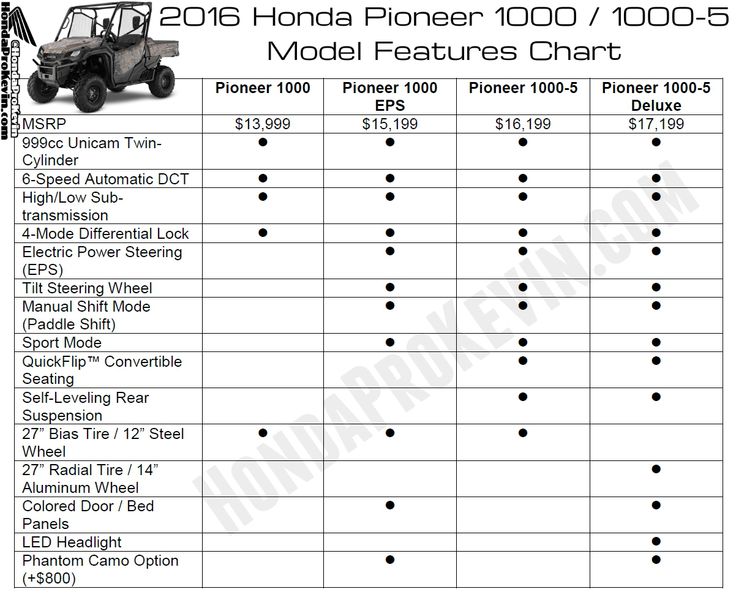 nine0004
nine0004
- The second digit 80 indicates the ratio of the height of the tire to its width, measured as a percentage. After doing some mathematical manipulations, we get the number 25 (in the English version, the height is equal to 25 inches).
- The number 12, as in the English version, shows the size disk in inches.
- Well, the letter R means that our tire is radial.
The most important thing to remember from the article is that it is not recommended to install tires of huge sizes that do not correspond to the parameters your ATV . If you want to change the tires on your vehicle, give us a call. we will help.
Do you want to choose a tire for your car, but do not understand tire markings well? It's not a problem! In this section, we will help you figure out what tire parameters are, what they mean, and which tire is right for your car.
195/65 R15 91 TXL
195 is the tire width in mm.
65 - Proportionality, i.e. profile height to width ratio. In our case, it is equal to 65%. Simply put, with the same width, the larger this indicator, the higher the tire will be and vice versa. Usually this value is simply called “profile”.
Since the tire profile is a relative value, it is important to consider when choosing rubber that if you instead of size 195/65 R15, if you want to put tires with a size of 205/65 R15, then not only the width of the tire will increase, but also the height! Which in most cases is unacceptable! (except when both of these sizes are indicated in the car's operating book). You can calculate the exact data on changing the outer dimensions of the wheel in a special tire calculator.
If this ratio is not specified (for example, 185/R14C), then it is equal to 80-82% and the tire is called full profile. Reinforced tires with this marking are usually used on minibuses and light trucks, where a large maximum wheel load is very important. nine0004
Reinforced tires with this marking are usually used on minibuses and light trucks, where a large maximum wheel load is very important. nine0004
R - means a tire with a radial cord (in fact, almost all tires are made this way now).
Many mistakenly believe that R- means the radius of the tire, but this is the radial design of the tire. There is also a diagonal design (indicated by the letter D), but recently it has practically not been produced, since its performance is noticeably worse.
15 - wheel (rim) diameter in inches. (It is the diameter, not the radius! This is also a common mistake). This is the “landing” diameter of the tire on the disk, i.e. is the inside size of the tire or the outside of the rim. nine0004
91 - load index. This is the level of maximum permissible load on one wheel. For passenger cars, it is usually done with a margin and is not a decisive factor when choosing tires (in our case, IN - 91 - 670 kg. ). For minibuses and small trucks, this parameter is very important and must be observed.
). For minibuses and small trucks, this parameter is very important and must be observed.
T is the tire speed index. The larger it is, the faster you can ride on this tire (in our case, IS - H - up to 210 km / h). Speaking about the tire speed index, I would like to note that with this parameter, the tire manufacturer guarantees the normal operation of the rubber when the car is constantly moving at the specified speed for several hours. nine0004
There are two different markings for American tires. The first one is very similar to the European one, only the letters “P” (Passanger - for a passenger car) or “LT” (Light Truck - light truck) are placed before the size. For example: P 195/60 R 14 or LT 235/75 R15. And another tire marking, which is fundamentally different from the European one.
nine0002 Example: 31x10. 5 R15 (corresponds to European size 265/75 R15)
5 R15 (corresponds to European size 265/75 R15) 31 is the outside diameter of the tire in inches.
10.5 is tire width in inches.
R - a tire with a radial design (older tire models were with a diagonal design).
15 is the inner diameter of the tire in inches.
Generally speaking, except for inches that are unusual for us, the American tire marking is logical and more understandable, unlike the European one, where the height of the tire profile is not constant and depends on the width of the tire. And here everything is simple with decoding: the first digit of the standard size is the outer diameter, the second is the width, the third is the inner diameter. nine0004
XL or Extra Load is a reinforced tire, the load index of which is 3 units higher than that of conventional tires of the same size.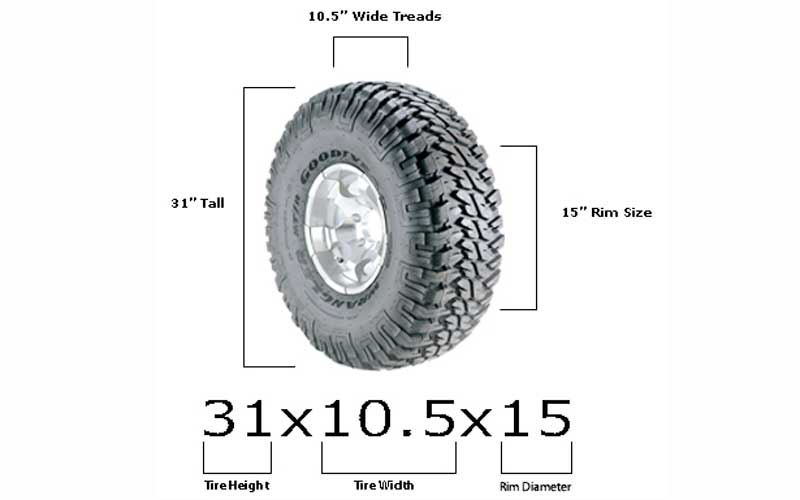 In other words, if a given tire has a load index of 91 marked XL or Extra Load, then this means that with this index, the tire is able to withstand a maximum load of 670 kg instead of 615 kg (see the table of tire load indices).
In other words, if a given tire has a load index of 91 marked XL or Extra Load, then this means that with this index, the tire is able to withstand a maximum load of 670 kg instead of 615 kg (see the table of tire load indices).
All Season or AS all season tires. Aw (Any Weather) - Any weather. nine0004
Pictogram * (snowflake) — rubber is designed for use in harsh winter conditions. If this marking is not on the sidewall of the tire, then this tire is intended for use only in summer conditions.
Aquatred, Aquacontact, Rain, Water, Aqua or pictogram (umbrella) Special rain tires.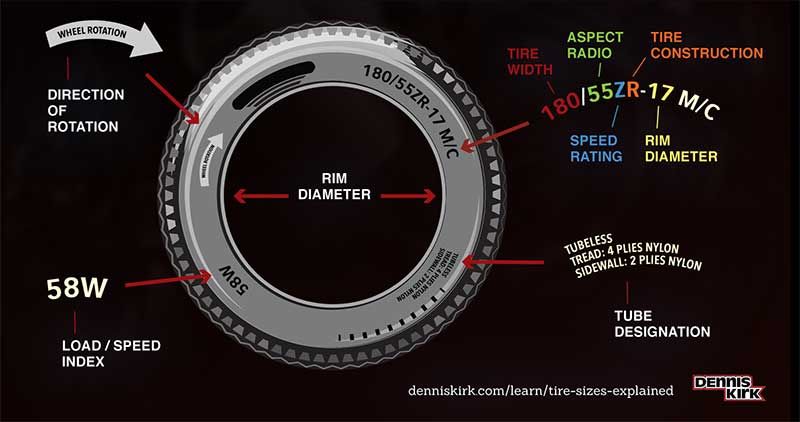
Outside and Inside ; asymmetric tires, i.e. It is important not to confuse which side is the outside and which is the inside. When installing, the Outside inscription must be on the outside of the car, and Inside on the inside. nine0004
RSC (RunFlat System Component) - RunFlat tires are tires that allow you to continue driving your vehicle at speeds up to 80 km/h with a FULL tire pressure drop (puncture or cut). On these tires, depending on the manufacturer's recommendations, you can drive from 50 to 150 km. Different tire manufacturers use different designations for RSC technology. For example: Bridgestone RFT, Continental SSR, Goodyear RunOnFlat, Nokian Run Flat, Michelin ZP etc.
Rotation or arrow This marking on the tire sidewall indicates a directional tire. When installing the tire, you must strictly observe the direction of rotation of the wheel, indicated by the arrow.
Tubeless - tubeless tire. In the absence of this inscription, the tire can only be used with a camera. Tube Type - indicates that this tire must be used only with a tube.
In the absence of this inscription, the tire can only be used with a camera. Tube Type - indicates that this tire must be used only with a tube.
Max Pressure ; maximum allowable tire pressure. Max Load - the maximum allowable load on each wheel of the car, in kg. nine0004
Reinforced or the letters RF in the size (for example 195/70 R15RF) means that this is a reinforced tire (6 layers). The letter C at the end of the size (for example 195/70 R15C) indicates a truck tire (8 layers).
Radial this marking on the rubber in the standard size means that this is a radial construction tire. Steel means that there is a metal cord in the tire structure.
Letter E (in a circle) - the tire meets the European requirements of ECE (Economic Commission for Europe). DOT (Department of Transportation - US Department of Transportation) is an American quality standard. nine0004
Temperature A, B, or C Temperature resistance of the tire at high speeds on the test bench (A is best).